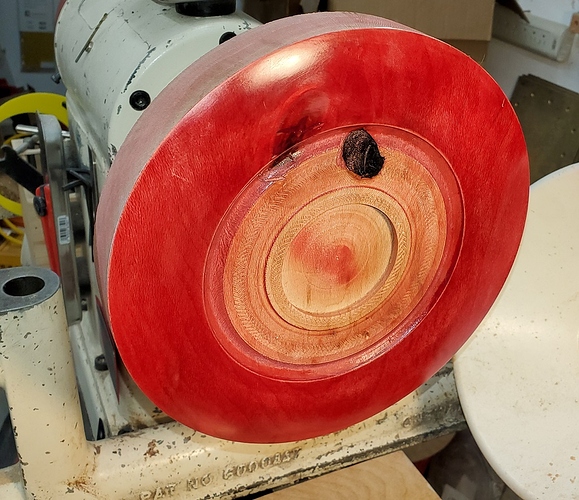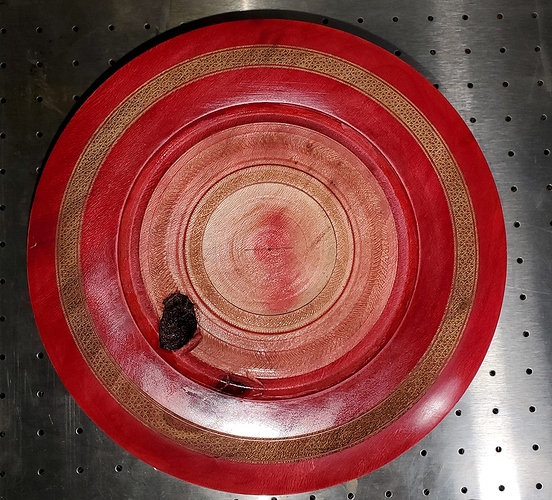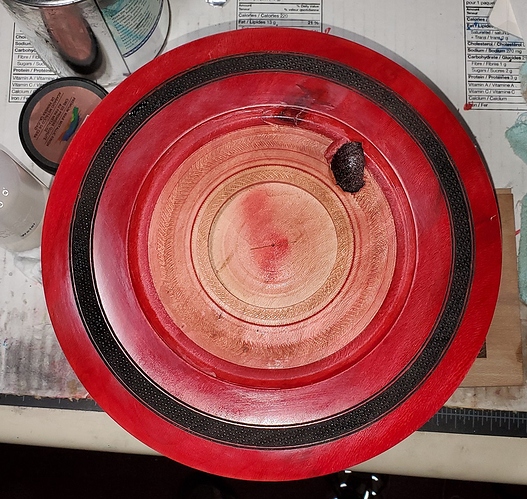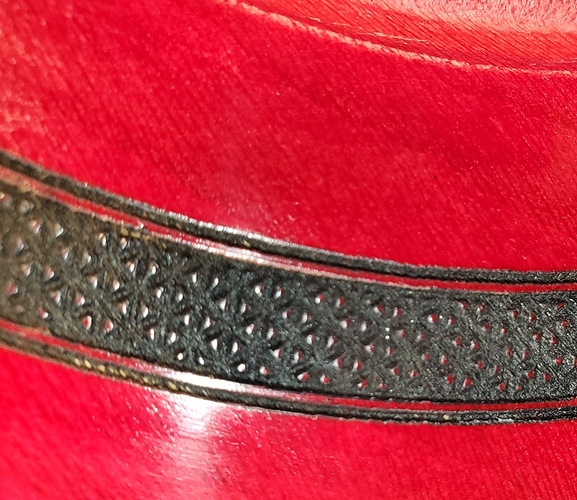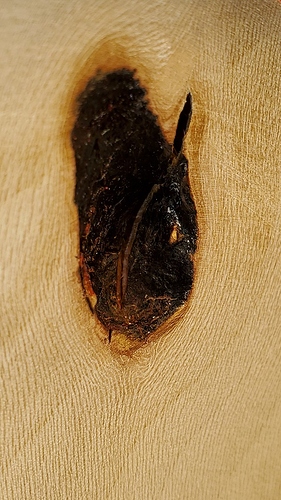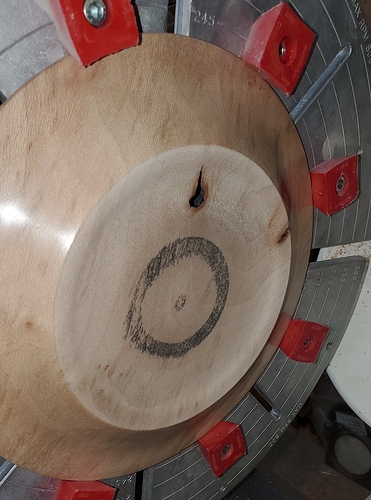I figure that the best way deal with stress, anxiety, anger or boredom driven by the current pandemic self-isolation is ride it out in my workshop. Here are some progress photos of my first “isolation project”.
It is a woodturned platter that is turned from air dried London Plane that’s been sitting around for at least 15 years. It’s about 9.5 inches in diameter and currently about 1.5" thick. It will probably be about an inch thick when completed.
The rim was airbrushed with several coats of scarlet Procion MX fabric dye mixed in a heavy concentration followed by a few coats of poly and then waxed and buffed with clear shoe polish. Finishing first allows for any vapor stains from the engraving process to be easily cleaned off and also allows me to infill the engraving with ink and quickly wipe off the excess ink before it stains the finished area…
The engraved texture is a vector pattern of 3D triangles using the laser’s 3D engraving mode. 3D engraving delivers higher power to the darker shades of the artwork and less power to the lighter shaded areas.
The first photo is what the rim looked like prior to laser engraving. The bottom and centre of the platter have not been turned but a recess has been turned in the bowl area for re-chucking to turn the back prior to hollowing. Note the big knot in the rim. I had to fill a big crack in that knot with epoxy coloured with the same dye powder that I used for airbrushing the rim. There is also a huge knothole in the center of the platter where I removed a loose knot/branch. Hopefully most of that void will be turned away when I hollow it but, if any is left, it then it’s art and I meant it to be that way. ![]()
Photo 2 shows the engraving in process.
Photos 3 and 4 show the finished engraving. The engraving was done in 3 lower power passes in part to minimize vapor staining but also because I’ve learned from experiment that the texture is sharper and better defined than if it was done in one high powered pass. Note that there is minimal colour change in the engraving. Not all woods go dark when engraved.
Photos 5 and 6 show the engraved area after infilling with black India ink. The pinstripes were especially fun. While pre-finishing helped a lot, I still had to work quickly and only paint about an inch of the pinstripe at a time with a very fine brush before w.ping off the excess before it could soak through the wax.
I was fairly happy with the centering of the engraving. When I put it back on the lathe and spun it up to re-buff the finished area I noted that there was only about 1 quarter millimeter of runout on the engraved pinstripe. The engraving is not centered perfectly between the inner and outer edges of the rim but that will be corrected when I hollow the centre.
Next, the platter will be reversed on the chuck to turn and finish the bottom, then it will be flipped back over and re-chucked to hollow out and finish the bowl. Stay tuned for more photos as work progresses.
